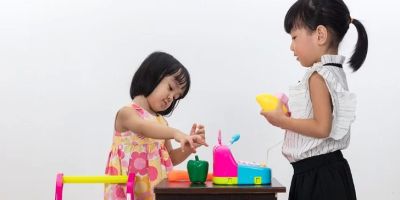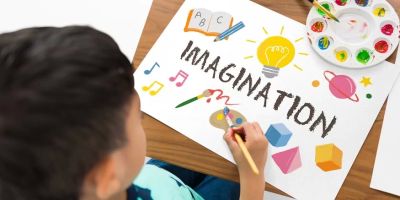The Best Toys to Develop Problem-Solving Skills in Kids
As parents, guardians, or educators, fostering problem-solving skills in children is a top priority. Problem-solving is a crucial life skill that helps children navigate challenges in their everyday lives, develop creativity, and build confidence. One of the most effective ways to help children develop this skill is through play, particularly with toys that encourage critical thinking, creativity, and strategic planning. In this article, we’ll explore some of the best toys designed to develop problem-solving skills in children and why they are essential for their growth.
1. What Are Problem-Solving Toys?
Problem-solving toys are designed to engage children in activities that require them to think critically, make decisions, and figure out how to achieve a goal or solve a challenge. These toys stimulate a child’s cognitive abilities by providing opportunities for them to experiment, learn from mistakes, and explore different outcomes. They can range from simple puzzles to complex building kits that involve strategy and engineering skills.
Some common characteristics of problem-solving toys include:
- Encouraging creativity and imagination
- Incorporating logic and reasoning tasks
- Promoting perseverance and patience
- Offering opportunities for trial and error learning
These toys help children build cognitive flexibility, an essential skill in tackling challenges and thinking outside the box. When children use these toys, they develop problem-solving strategies that are useful throughout their academic and personal lives.
2. Puzzles and Brain Teasers
Puzzles are one of the most traditional and effective toys for developing problem-solving skills. Whether it’s a jigsaw puzzle, a Sudoku book, or a Rubik’s Cube, these toys require children to think logically, strategize, and work through a series of steps to reach the solution.
For example, jigsaw puzzles help children improve spatial reasoning, patience, and the ability to see a bigger picture from smaller components. As they figure out how the pieces fit together, they learn about patterns, sequences, and logic.
Brain teasers like Sudoku or crossword puzzles challenge kids to use deductive reasoning and memory, strengthening their ability to solve complex problems with focus and concentration. These puzzles encourage kids to think critically and to not give up when the solution isn’t immediately clear, reinforcing the idea that persistence leads to success.
3. Building Toys: Lego and Construction Kits
Building toys, like LEGO sets or other construction kits, are excellent tools for promoting problem-solving skills. These toys encourage children to follow instructions, use creativity, and develop spatial awareness as they build structures. They also offer a wonderful opportunity for children to experiment with different shapes, sizes, and combinations to achieve their desired result.
When children build with blocks or kits, they engage in hands-on learning. For example, by following the instructions to complete a project, kids improve their ability to work through complex tasks. The real problem-solving magic happens when children start designing their creations, working through challenges such as balancing structures, making sure pieces fit, and troubleshooting design flaws.
Building toys also foster teamwork when played in groups, teaching children how to collaborate to solve challenges and communicate effectively. These skills are valuable both for educational and personal development.
4. Interactive Games and Puzzles
Interactive games and puzzles provide a dynamic way for children to enhance their problem-solving abilities. These toys, such as strategy board games (like Chess or Connect Four), encourage children to think ahead, plan moves, and adapt strategies based on their opponent’s actions. Interactive games often involve critical thinking and decision-making in real-time, making them an engaging way for kids to practice problem-solving in a social context.
Games like Rush Hour or ThinkFun Gravity Maze require children to think multiple steps ahead and come up with unique strategies to win. These types of games teach cause-and-effect thinking, logical progression, and how to approach problems from different angles.
By making learning fun and interactive, children don’t just work on solving puzzles—they also develop skills in patience, critical thinking, and sportsmanship.
5. STEM Toys: Encouraging Scientific Thinking
STEM (Science, Technology, Engineering, and Mathematics) toys have become incredibly popular in recent years. These toys are designed to help children develop skills in scientific thinking, problem-solving, and innovation. From robotics kits to coding toys, STEM toys engage children with hands-on activities that require them to think logically, experiment, and apply mathematical concepts to real-world problems.
For example, Osmo Coding and LittleBits Electronics kits teach children how to code and build simple electronic devices, fostering both creativity and technical skills. These toys challenge children to solve real-world problems using technology, which is a critical aspect of modern problem-solving.
By experimenting with these toys, children learn how to approach problems methodically, debug issues, and continuously improve their solutions—skills they can carry into their future education and careers.
6. Toys That Promote Emotional and Social Problem-Solving
Problem-solving isn’t just about logic and reasoning; it also involves emotional and social intelligence. Toys that promote role-playing or emotional recognition can help children develop social problem-solving skills, such as empathy, conflict resolution, and communication.
For example, playsets like Playmobil or Disney Princess Dolls encourage children to act out different scenarios, helping them practice social interactions, understand other people’s perspectives, and work through conflicts in imaginative ways. These types of toys also allow kids to explore their emotions and practice handling different situations, promoting emotional intelligence alongside cognitive problem-solving.
7. How to Choose the Right Toys for Problem-Solving
When selecting toys to develop problem-solving skills, consider the child’s age, interests, and developmental stage. The right toy should challenge the child just enough to keep them engaged, but not so much that they feel frustrated.
Start with toys that match the child’s current skills and gradually introduce more complex toys as they grow. For younger children, toys that help with simple puzzles and blocks can build foundational skills. As children get older, move to more advanced problem-solving toys like strategy games, STEM kits, and logic puzzles.
At Knight Toys, we offer a wide range of problem-solving toys for all ages. From classic puzzles to interactive STEM toys, we have something to support every child’s learning journey.
Conclusion: Foster Critical Thinking with the Right Toys
Problem-solving skills are crucial for children’s development, and the best way to nurture these skills is through play. Whether it’s solving puzzles, building structures, or coding robots, the right toys can stimulate a child’s creativity and intellect. By introducing your child to toys that encourage problem-solving, you’re setting them up for success in all aspects of life. Explore our collection at Knight Toys to find the perfect toys that will help your child develop essential problem-solving abilities while having fun!





